The final minutes of “Into the Forest I Go,” Star Trek: Discovery’s mid-season cliffhanger, ask a lot of questions: Where is the Discovery? Did Captain Lorca send them there — wherever ‘there’ is — and if so, why? Who, really, is Lt. Ash Tyler? And what exactly is going on with Lt. Stamets’ silvery, Gary Mitchell-esque eyes?
“Despite Yourself,” the midseason opener, wastes no time answering most of these questions. In a mesmerizing ready room scene (and surely, it’s due to director Jonathan Frakes’ skill and experience handling Star Trek that we can use ‘mesmerizing’ to describe a ready room scene) the crew discuss their predicament and quickly realize they’re not where they expected to be.
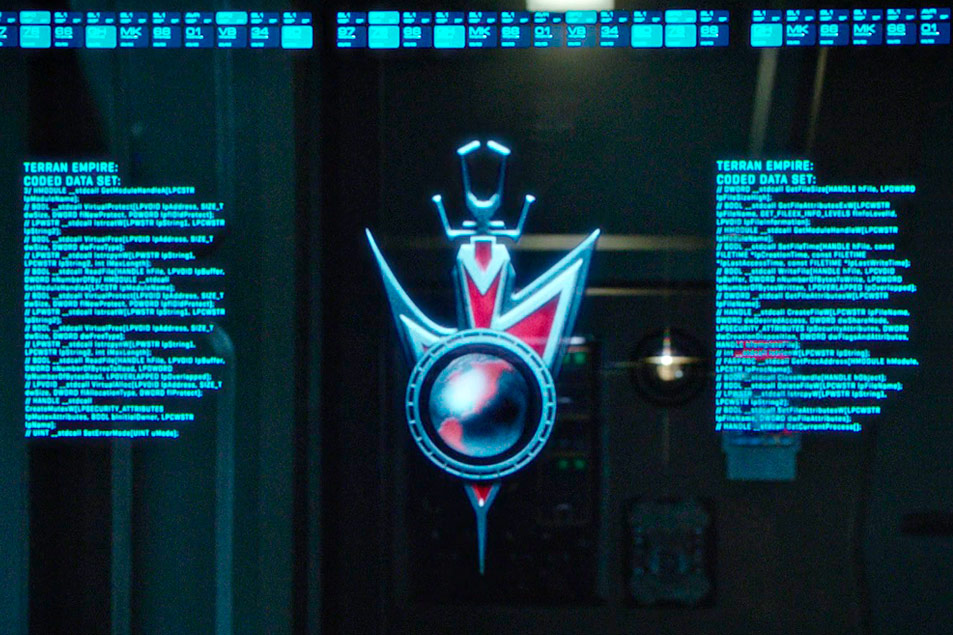
Additionally, because of Stamets’ condition, they’re probably going to be stuck wherever it is they are for a while.
Lorca seems to be as surprised as everyone else at the hostility found this alternate quantum reality — first introduced in 1967’s “Mirror, Mirror,” and revisited during the days of Deep Space Nine and Enterprise — so while his course “correction” made during the last spore drive jump of “Into the Forest I Go” was intentional, it certainly doesn’t appear that this is where he intended the Discovery to arrive.
Once the crew of the Discovery figures out where they are — not just in the Mirror Universe, but in the midst of a large debris field — they quickly set about retrieving a Klingon/Vulcan computer core from a wrecked ship that’s drifting nearby.
From the computer core we learn that this universe’s Michael Burnham, erstwhile captain of the ISS Shenzhou, is presumed dead, and that Lorca doesn’t captain the ISS Discovery… that duty falls to the alternate version of Cadet Sylvia Tilly, much to everyone’s surprise.
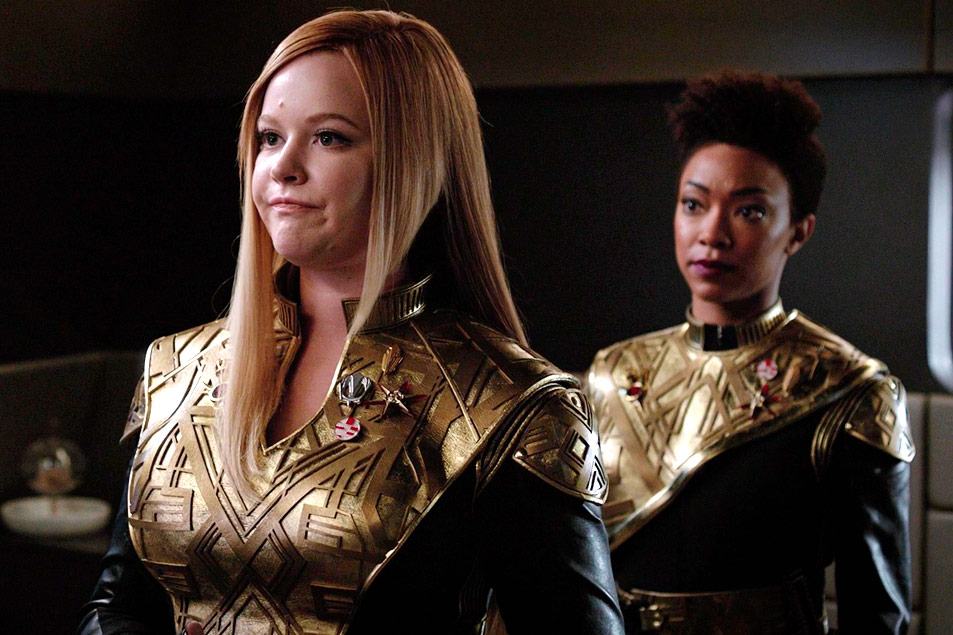
Tilly’s reluctant transformation into her formidable Terran Empire counterpart — nicknamed, among other amusingly over-the-top monikers, “Captain Killy” — is an instant classic addition to a half-century of Mirror Universe moments. Watching our Tilly have to playact as the evil Captain Killy is great fun, and it’s a testment to Mary Wiseman’s skills to see her turn on a dime from awkward junior officer to the badass “Slayer of Sorna Prime.”
We also learn that the Terran Empire’s not-so-secret weapon is the Constitution-class USS Defiant, the same ship recovered by the Commander Jonathan Archer and the crew of the ISS Enterprise during the events of 2005’s “In a Mirror, Darkly,” which got zapped through time and space after disappearing in the Original Series’ “The Tholian Web.”
The Defiant’s place in the Terran fleet is only briefly mentioned, but it will almost certainly become a significant plot point as the season progresses — and her wireframe computer image is already the center of much discussion among Trek starship aficionados.
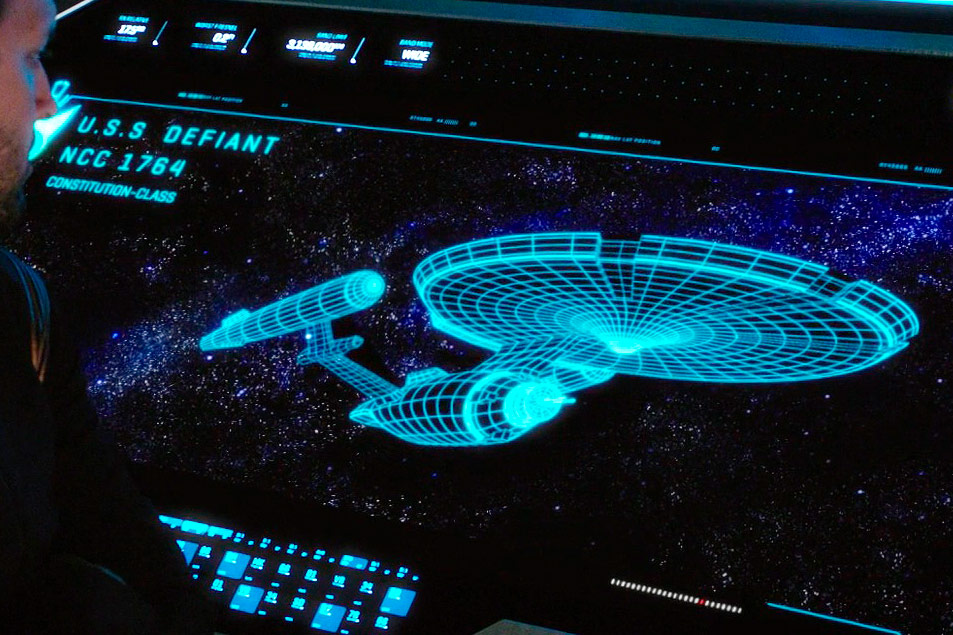
There’s been some fan speculation that given his dark, uncompromising stance, the Gabriel Lorca we’ve seen through these first ten episodes may actually originate in the Mirror Universe; while “Despite Yourself” neither confirms nor denies the idea, Lorca certainly seems to have the most contemplative response to the opposite nature of the Mirror Universe.
For the rest of the Discovery crew, learning that their counterparts are ruthless, bloodthirsty stalwarts in the Terran Empire is oddly reassuring. If one’s Mirror self is bad, and the Mirror Universe is the antithesis of the Prime Universe, then by definition one’s Prime self is good.
Lorca, on the other hand, seems genuinely disturbed when he learns of his Mirror counterpart’s fate, specifically that Mirror Lorca couldn’t save the crew of the ISS Buran any better than Prime Lorca could the USS Buran. (Additionally, Mirror Lorca is presumed to have killed Mirror Burnham and attempted a coup against the mysterious Terran emperor.)
“Well, there’s to me hoping I’d find a better version of ourselves over here,” he says to an unsure Burnham, and a quiet disappointment hangs over Lorca for the rest of the episode. Perhaps Lorca thought a parallel universe held the key to his ability to save the crew of the USS Buran and atone for his past mistakes. I look forward to seeing how Lorca comes to terms with himself, and I hope “our” Lorca has been the Prime Lorca all along.
His emotional characterization would be far less interesting if he’s given an external reason to be the way he is… and before Lorca can spend too long meditating on his nature, he finds himself in an agony booth aboard the ISS Shenzhou.
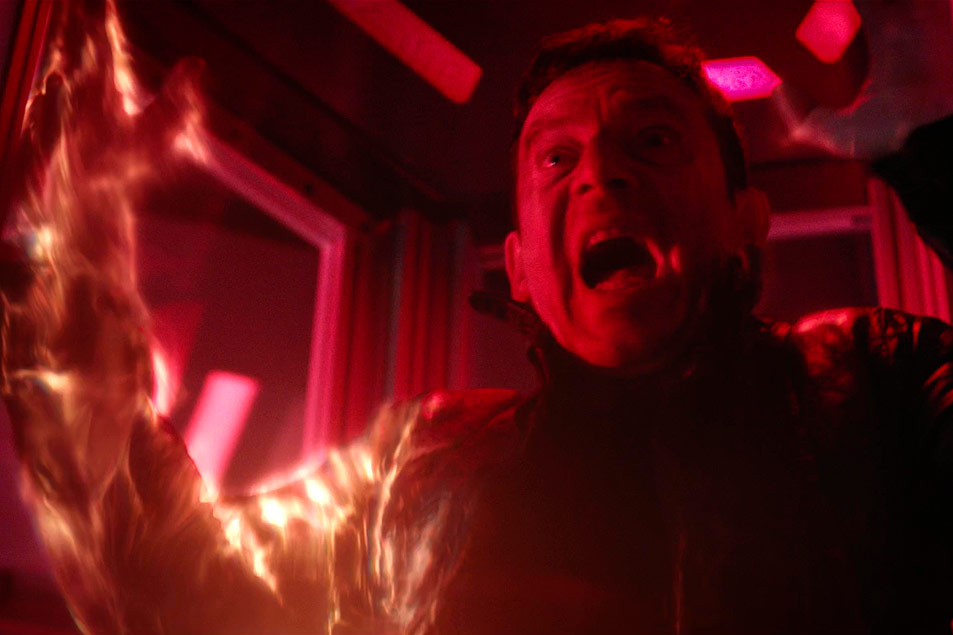
Burnham surprises the crew by showing up with Lorca in tow as her prisoner, and wastes no time attempting to regain command. Unfortunately, two things stand between Burnham and the captain’s chair: Captain Danby Connor (returning guest actor Sam Vartholomeos), whose Federation counterpart died during the Battle of the Binary Stars, and a tense turbolift ride down to the Shenzhou‘s bridge.
The turbolift fight scene between Connor and Burnham stands out as a highlight in a season of Star Trek that has easily featured the franchise’s best hand-to-hand combat sequences. The concept, direction, choreography, and performances are all superb, utilizing the entire (albeit small) set in the fight, including the futuristic tech behind access panels to trigger a disruption to artificial gravity.
I have only one complaint about the sequence, and it’s the slow clap from the bridge crew as they congratulate Burnham on her victory and return to command — I guess I shouldn’t be surprised that such a corny gesture comes right on the heels of a thrilling and emotionally charged scene, and in a galaxy filled with salutes, chanting, and golden armor, I suppose it’s going to get a little silly at times.
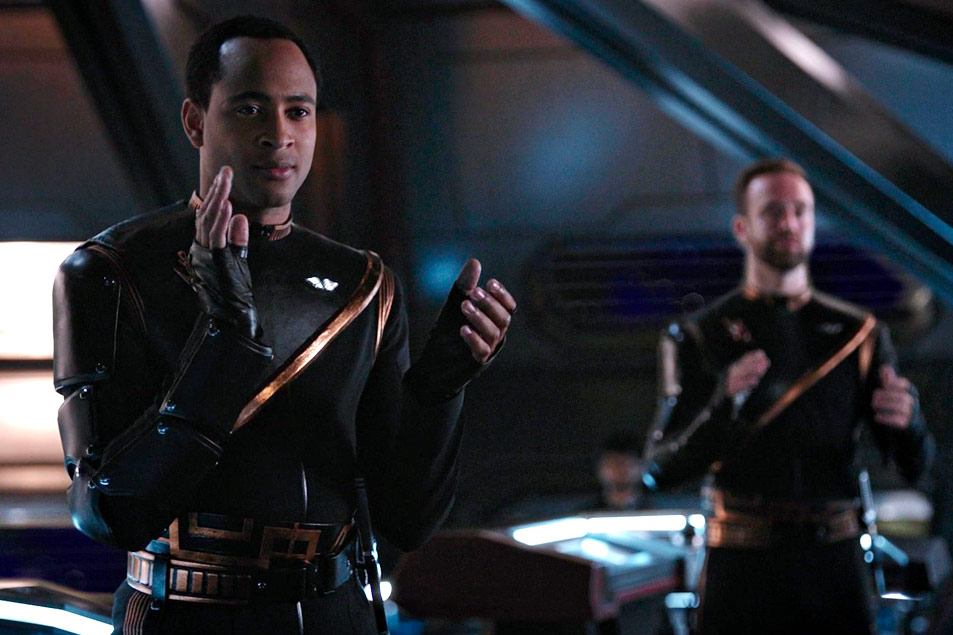
Unlike previous Star Trek series, which could spend an episode or two in the high camp of the Mirror Universe and then move on, Discovery is going to need to find a way to blend the historical campiness of the Mirror Universe with the serious dramatic tone that it’s already established.
The more episodic a series, the easier it is to play with tone from one episode to another without seeming inconsistent, so it’ll be interesting to see how the highly serialized Discovery continues to blend the two styles.
I started “Despite Yourself” cautiously optimistic about the Mirror Universe setting, but by the end I found myself towards the optimism and less towards caution — hopefully by the end of next week’s “The Wolf Inside,” I’ll have abandoned my misgivings about the setting entirely.
Another point of intense speculation that “Despite Yourself” all but confirmed is Lt. Ash Tyler’s identity as the Klingon Voq. I say “all but” because of my own nagging disbelief that a member of one species can be surgically altered to become a medically indistinguishable member of another species.
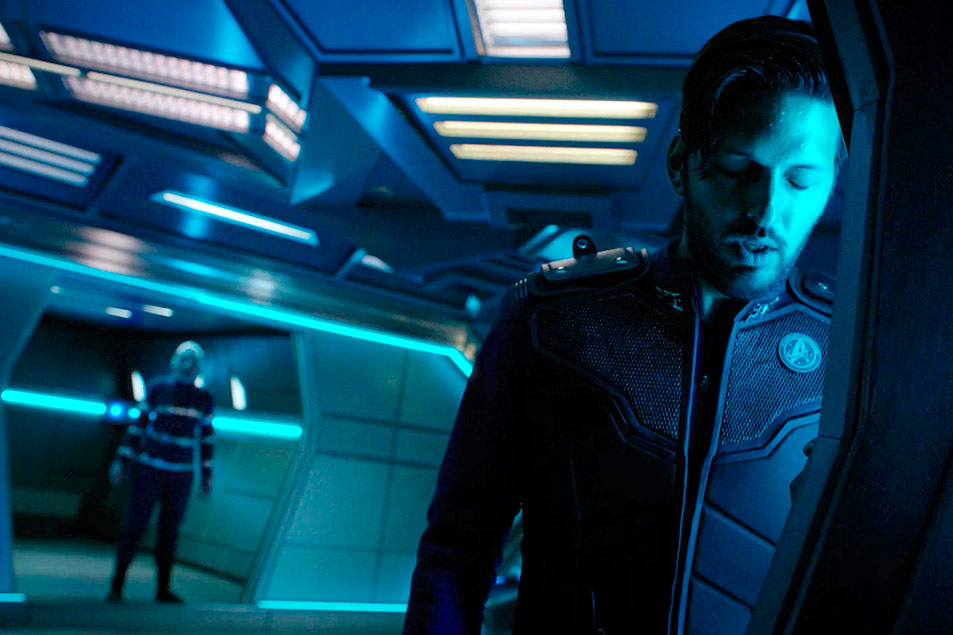
It’s every Star Trek fan’s sworn duty to obsess over that one piece of scientific wizardry they just can’t believe, while happily accepting 99 other pieces of equally unbelievable pseudoscience. Why this is where I draw the line, I don’t know. A vast mycelial system underpinning all quantum realities and allowing instantaneous travel between dimensions? Sure, why not.
Brute-forcing a member of one species into another apparently using nothing but mundane surgical techniques? No.
While the 1967 Trek episode “The Trouble with Tribbles” featured a Klingon agent transformed into a “human” named Arne Darvin, the vastly-different-from-human new look of Klingons in Discovery makes it much less compatible, Trek history aside. But putting my personal incredulousness aside, it’s clear the writers are telling us that one way or another the human Tyler was once the Klingon Voq. Got it.
Lt. Tyler is understandably shaken after an intense meeting with L’Rell in the brig during which she attempts to awake Voq’s dormant self within him — reciting T’Kuvma’s prayer from the opening episodes, and even shouting at him, “You have another name!”
Eventually, he takes his concerns to Dr. Culber. Culber reviews Tyler’s medical history and comes to the conclusion that Tyler is not himself, at which point Tyler promptly kills Culber by snapping his neck.
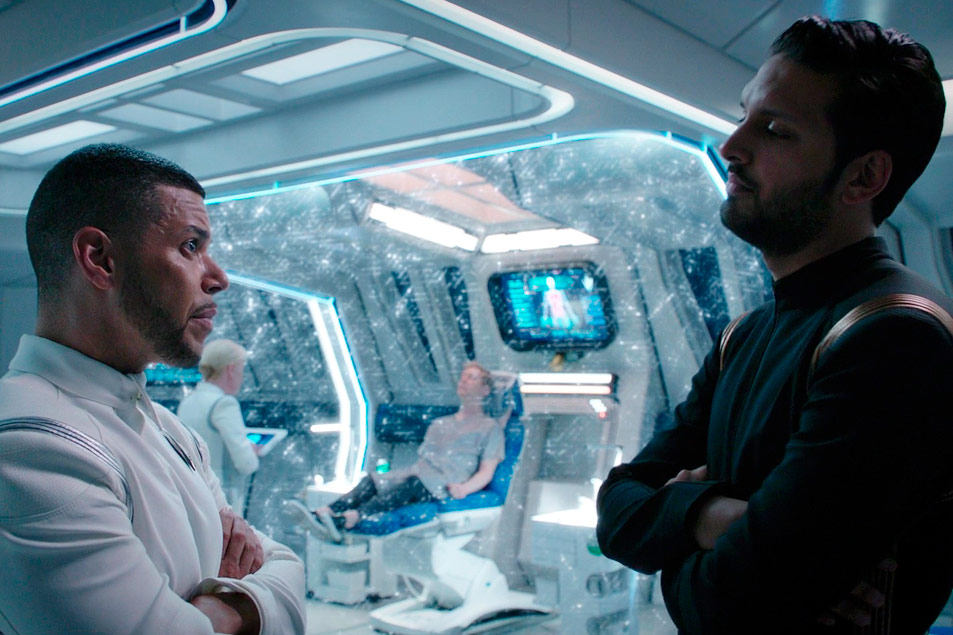
The episode spends just a few seconds lingering on this shocking event before moving on, and what little reflection the episode does show is framed from Tyler’s perspective, not Culber’s. Dr. Culber, along with Lt. Stamets, is one half of Star Trek’s first canon openly gay couple; I will let other, more qualified people discuss the representational significance of Culber’s untimely death, but I will at the very least say that this is a big deal.
Wilson Cruz, who plays the late (for now?) Dr. Culber, hinted strongly that we hadn’t seen the last of him on Discovery, and showrunners Aaron Harberts and Gretchen Berg also confirmed future appearances in statements made on both After Trek and pre-episode interviews which hit the web immediately following the US broadcast of this episode.
While I understand why they’d want to speak out, I would argue that the better a story is told, the less the need for audience reassurance when something unexpected happens. Culber’s death felt like a redshirt’s death: there to serve the story of the character who kills, rather than the story of the killed. Perhaps like Tasha Yar in The Next Generation’s “Yesterday’s Enterprise,” Culber will be given a chance to make up for the seemingly senseless death he was given.
There’s another issue with needing to assure the audience that everything will be okay in the end, and it’s that you run the risk of seeming dismissive toward your audience; that a hugely dramatic moment comes in the middle of a character’s journey — instead of its end — doesn’t diminish the impact that moment can have on the viewer.
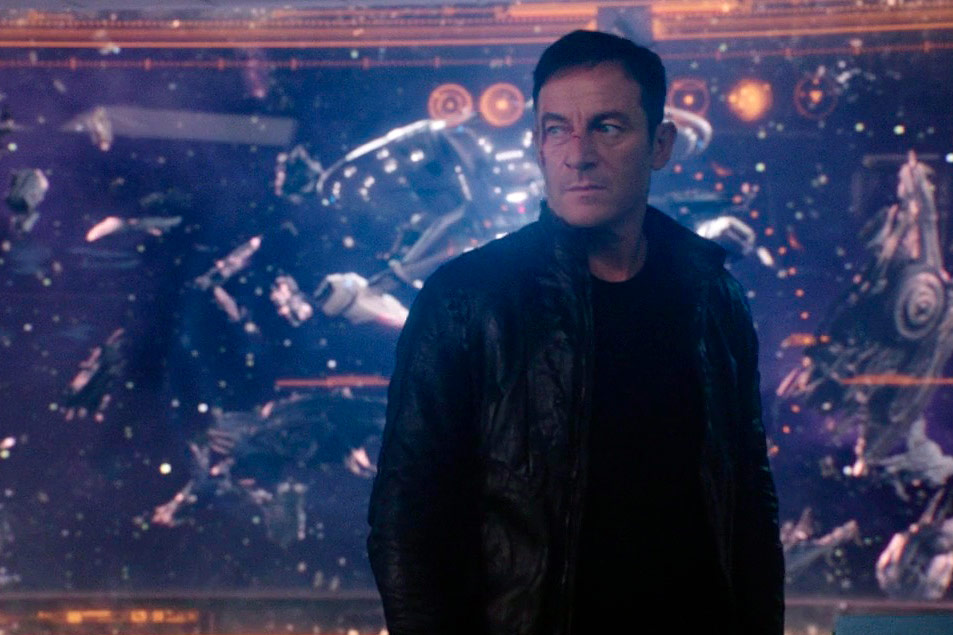
I defy anyone to watch Spock’s death scene in The Wrath of Khan and, because they know he’ll come back in The Search for Spock, to feel nothing. You wouldn’t dismiss a first-time viewer’s reaction to Spock’s death with a “Just you wait…,” you’d let them mourn — and probably be mourning yourself, even if you’ve watched the scene a dozen times and know the outcome.
Spock’s death and subsequent funeral don’t lose their potency just because we know he’ll live again. The power of storytelling doesn’t come from the final outcome, it comes from everything a character – and a viewer – endures to get there.
So far this season, we’ve learned a lot about who these characters are; now that we’re through the looking glass and in the Mirror Universe, we’re going to learn even more by finding out who they aren’t. Regardless of the isolated misgivings I have about “Despite Yourself,” it’s an exciting, fast-paced episode that sets up a compelling arc.
I can’t wait to find out what the rest of the season has in store.
![]()

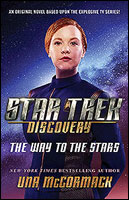 Novel #4:
Novel #4: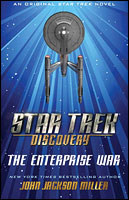 Novel #5:
Novel #5: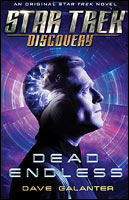 Novel #6:
Novel #6: